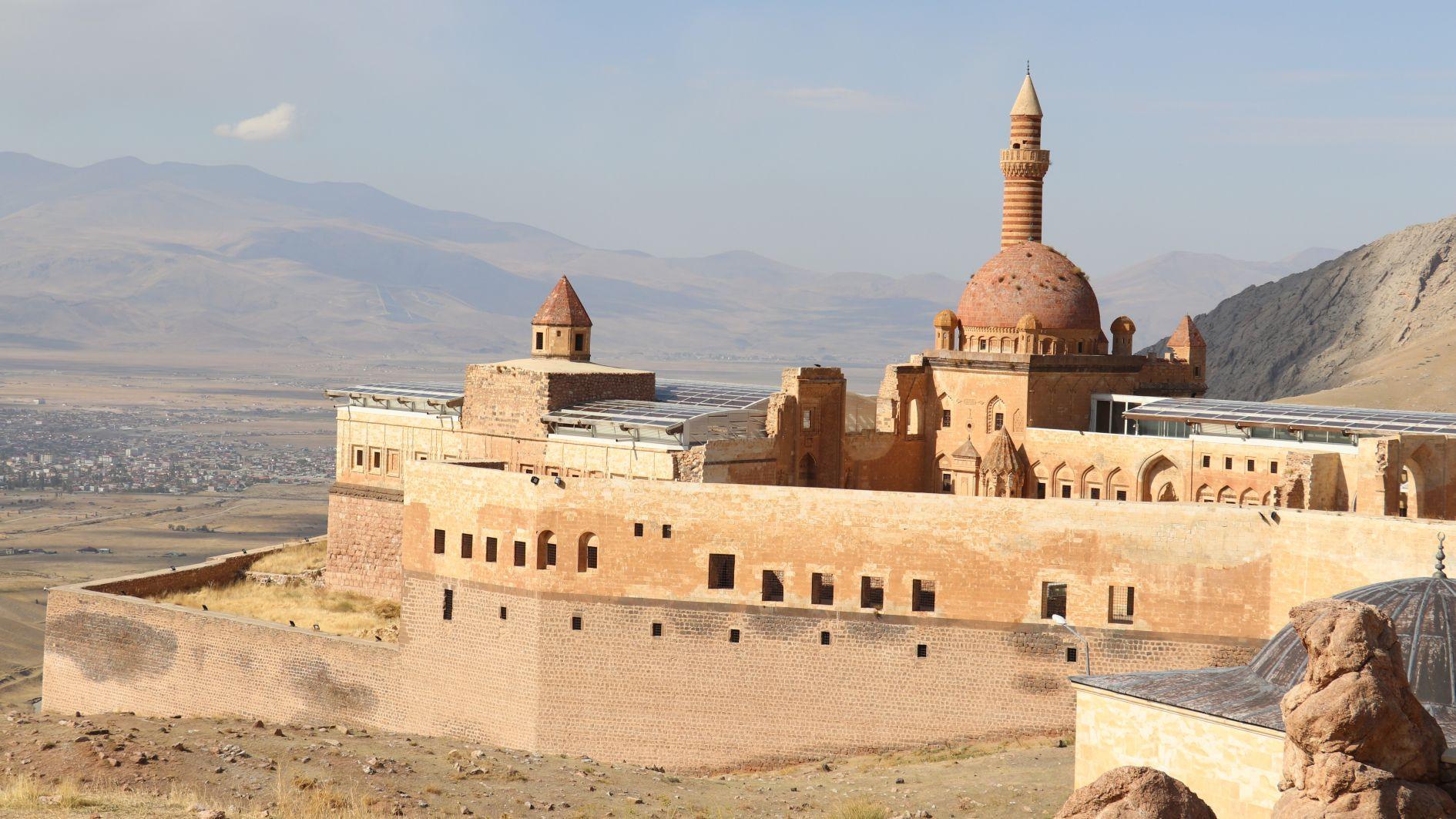Work begins for İshak Paşa Palace’s UNESCO nomination
AĞRI

Preparations are intensifying to elevate İshak Paşa Palace, a magnificent Ottoman-era monument from the Tulip Era currently on UNESCO’s World Heritage Tentative List, to the organization’s permanent World Heritage List through a dedicated “management area” and “management plan.”
Associate Professor Şehnaz Eraslan Alıcıgüzel from Ağrı İbrahim Çeçen University’s Faculty of Science and Letters, Department of History, is conducting a research project with two assistants as part of a Scientific Research Project (BAP) on the draft management plan for İshak Paşa Palace. Once completed, the project will be shared with relevant institutions.
Speaking to state-run Anadolu Agency, Alıcıgüzel said that work is needed to enable İshak Paşa Palace to move from UNESCO’s tentative list to its permanent World Heritage List.
Pointing out that UNESCO has set several criteria for inclusion, Alıcıgüzel said: “A site must meet one or more of these criteria and possess authenticity, integrity, as well as a management area and a management plan. Therefore, only cultural heritage sites that fulfill these conditions are evaluated.”
She explained that “site management” is crucial for the sustainable preservation of an area and for ensuring it is administered jointly by all relevant institutions and organizations, with the “management plan” forming an essential part of that process.
Although the İshak Paşa Palace was added to the tentative list in 2000, Alıcıgüzel noted that it still lacks both a management area and a management plan. “Since 2005, UNESCO has required all cultural and especially World Heritage sites to have a management area and plan. If a site lacks these, UNESCO does not include it in the World Heritage List,” she said.
Alıcıgüzel explained that under the university’s Scientific Research Project framework, they are working on a draft management plan for the palace and that a formal protocol between the Ministry of Culture and Tourism’s General Directorate of Cultural Heritage and Museums and local administrations could initiate the official management process.
“We are currently at the initial stage of the project,” she said. “Our team of three continues field observations, and we are holding meetings with related institutions. We will conduct a SWOT analysis focusing on the site’s conservation and sustainable tourism potential. Based on these analyses, the main framework of the management plan will begin to take shape. Ultimately, this plan itself is a project.”
She emphasized that UNESCO requires a management plan mechanism detailing how a site is preserved before accepting it into the World Heritage List. Alıcıgüzel acknowledged that while there have been criticisms regarding restoration work at İshak Paşa Palace, the structure has retained much of its authenticity.
Stressing the need for both a management area and a plan for the palace, Alıcıgüzel said: “Our existing regulations already allow for this. İshak Paşa Palace is a cultural heritage site worthy of inclusion on the UNESCO World Heritage List. It showcases both Ottoman and Seljuk architectural and technical features. At the same time, its decorative compositions bear Baroque and Rococo influences, as well as elements of Persian art. Thus, it is an eclectic palace — a structure combining diverse architectural elements. In fact, this eclecticism is among the qualities UNESCO values.”
Alıcıgüzel added that without a management area and plan, sustainable preservation would remain limited. “Therefore, it is crucial that the ministry, the governor’s office, the university, or the municipality — whichever is deemed appropriate — sign a protocol to initiate this process as soon as possible. Once this step is taken, the likelihood of İshak Paşa Palace being nominated for the main list will significantly increase,” she said.















